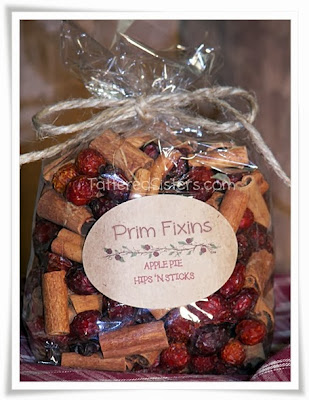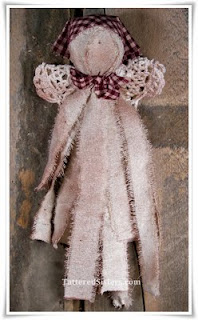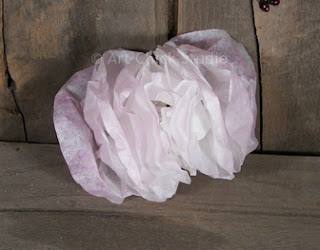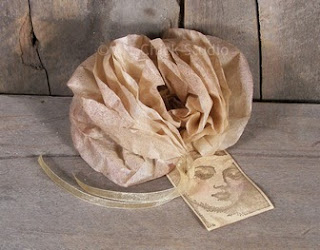Sorry that I've been kind of absent of late. The holidays tend to take my attention to family, so I was not as active with my blogging as I normally am. I thought I'd start the new year though with a Primitive Recipe for rusting metal.
There are lots of recipes to rust metal. Some involve the use of bleach, which I prefer not to use. So the recipe I like uses simple ingredients you usually have on hand, and that aren't going to be too nasty to use. It will still smell gross, but it's a lot safer than using bleach. Although I still wear rubber gloves when I use this, just to be safe. I urge you to wear rubber gloves as well.
It's also important to note that not all metals will rust at the same rate. Iron rusts the best--but how often would we have iron items we need to rust? Just know that if you're rusting various items, they won't all look the same amount of rusty when this process is complete.
Ingredients
- 1 16oz Bottle of Peroxide
- 1 Cup Distilled White Vinegar
- 1 TBSP Kosher Salt (iodized "table" salt just doesn't work right)
- Items for rusting (safety pins, bells, nails, etc)
- 2 Plastic Containers for the mixture--one container should have a lid
- Old cookie sheet you won't use again (or a piece of cardboard) lined with paper towels
- Plastic Spoon (not metal!)
- Rubber Gloves
1. If you're using a plastic container like I do to do your mixing, poke holes in the lid. Your other container doesn't need a lid, but one of them does because it will serve as a strainer later on.
2. Add your Peroxide, Vinegar, and Salt to your container and stir. The vinegar and salt are going to be doing the rusting, by the way; the peroxide adds oxygen, which helps to speed up the oxidation process.
3. Add your metal items and stir again, then cover with the lid. Then set your container somewhere, away from pets and humans. It's going to smell, and you don't want pets or kids getting into it. It's good for it to get some direct sunlight, if possible. Leave the container set for a day. Stir your solution a few times during the day.
4. Put on your gloves again and then strain your metal items by pouring the liquid out thru the plastic lid of your container into your second plastic container. Once empty, spread your metal items onto your cookie sheet so they are in a single layer.
5. Let the metal items dry for a few hours, then turn them over to make sure they dry completely on both sides. Drying in the sun is very helpful--but do NOT put these in the oven. You don't want fumes from items to get in your metal oven. The items should get more rusty-looking as they dry.
6. Remember that not all items will rust at the same rate, nor will they all look the same. If you're unhappy with the finish you can repeat the rusting process.
Here's an example of a variety of safety pins that I rusted:
Now, what do you do with your leftover rusting solution? That's a good question. I've researched this a lot, on a variety of websites--from chemistry boards, to artist sites, to hobbyist-related and all sorts of sites in between. And the options I have found are varied.
- Dilute the solution with a large amount of water and pour down the toilet. I have done this in the past, and since my husband is a plumber, he said it was fine since the solution has been so diluted, and because we do not have any copper/metal pipes. If you're not 100% sure about your pipes, I would avoid this option.
- Pour into the solution a large amount of kitty litter. Once the liquid is absorbed, put it into a zip-lock bag and put in your trash.
- Pour into the solution enough Baking Soda to absorb the liquid; this will serve to neutralize the solution and solidify it so you can then put it in a zip-lock bag and throw it away.
- Seal the solution into a small container or jar and throw it away.
Which disposal method you use is really up to you. I think you should use your best judgement or do some more research on your own. I personally also do not re-use my rusting solution. I feel that after the products are combined and their chemical reaction occurs, the solution isn't quite the same anymore. So I just do a lot of rusting at one time, and make new solution each time.
I also found another method of rusting using the same ingredients. So I'm gonna share that here. I haven't tried it, but at least it gives you another option.
- With a spray bottle, spray items with white vinegar and allow to dry. Repeat on other sides.
- Mix - 16oz hydrogen peroxide, 2oz white vinegar, and 1/2 Tbsp of salt in a spray bottle
- Spray and watch the rust appear, allow to dry and then repeat for desired effect
If any of you try that particular method, please email me and let me know how it went. I think that would be great for doing a small number of items at a time. Happy rusting, everyone!
UPDATE: One of our readers (Marcia) wrote in to share some tips for rusting items that she uses with great success. Marcia suggests that you soak things in toilet bowl cleaner first, before rusting them. She says it takes the zinc coating off the items and they then rust a lot better. She also says she uses the cheapy The Works brand, lets the items soak for a few minutes, then rinses them off and dries them before putting them in the rusting solution. Marcia also uses an old toaster oven in the garage to bake her rusting items in for about 15 minutes. Thanks for your great tips, Marcia!
UPDATE: One of our readers (Marcia) wrote in to share some tips for rusting items that she uses with great success. Marcia suggests that you soak things in toilet bowl cleaner first, before rusting them. She says it takes the zinc coating off the items and they then rust a lot better. She also says she uses the cheapy The Works brand, lets the items soak for a few minutes, then rinses them off and dries them before putting them in the rusting solution. Marcia also uses an old toaster oven in the garage to bake her rusting items in for about 15 minutes. Thanks for your great tips, Marcia!




















